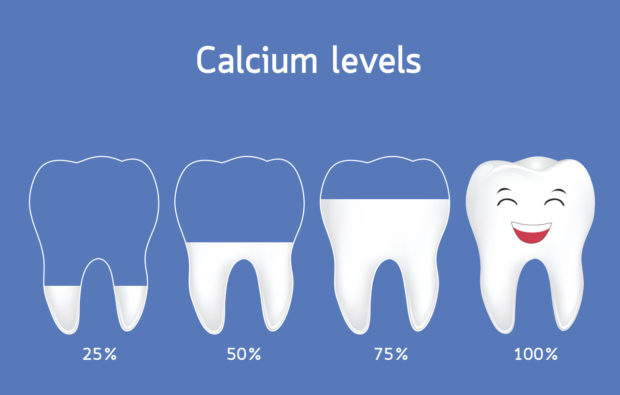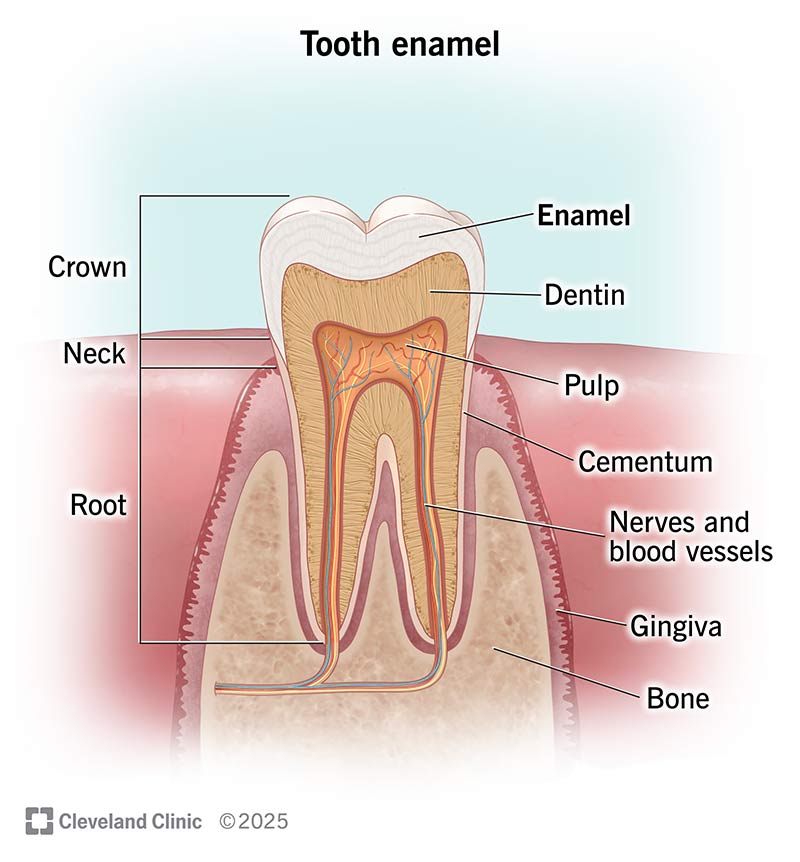آخرین مطالب
امکانات وب
Enamel
The enamel is the hardest tissue in the human body. It is the only ectodermal derivative of the tooth. Inorganic constituents account for 96% by weight and they are mainly calcium phosphate in the form of hydroxyapatite crystals. These apatite crystals are arranged in the form of rods. All other hard tissues of the body, dentin, cementum and bone also have hydroxyapatite as the principal inorganic constituent. Hydroxyapatite crystals differ in size and shape; those of the enamel are hexagonal and longest.

Enamel is the only hard tissue, which does not have collagen in its organic matrix. The enamel present in the fully formed crown has no viable cells, as the cells forming it—the ameloblast degenerates, once enamel formation is over. Therefore, all the enamel is formed before eruption. This is of clinical importance as enamel lost, after tooth has erupted, due to wear and tear or due to dental caries, cannot be formed again. Enamel, lacks not only formative cells but also vessels and nerves. This makes the tooth painless and no blood oozes out when enamel is drilled while making a cavity for filling.

Dentin
The dentin forms the bulk of the tooth. It consists of dentinal tubules, which contains the cytoplasmic process of the odontoblasts. The tubules are laid in the calcified matrix—the walls of the tubules are more calcified than the region between the tubules. The apatite crystals in the matrix are plate like and shorter, when compared to enamel. The number of tubules near the pulp are broader and closer and they usually have a sinusoidal course, with branches, all along and at their terminus at the dentinoenamel or cementodentinal junction.
The junction between enamel and dentin is scalloped to give mechanical retention to the enamel. Dentin is avascular. Nerves are present in the inner dentin only. Therefore, when dentin is exposed, by loss of enamel and stimulated, a pain-like sensation called sensitivity is experienced. The dentin forms throughout life without any stimulation or as a reaction to an irritant. The cells that form the dentin—the odontoblast lies in the pulp, near its border with dentin. Thus, dentin protects the pulp and the pulp nourishes the dentin. Though dentin and pulp are different tissues they function as one unit.

Why do teeth lose enamel?
Several factors can contribute to tooth enamel loss, including: Environmental factors like friction, stress and everyday wear and tear. Teeth grinding or clenching (bruxism). Drinking soda, fruit juice and other sugary drinks.
How do I know if my enamel is gone?
As the enamel continues to erode, your teeth might turn a gray or yellowish color. If your teeth change shape, it's a good indicator that you have enamel damage. Your teeth may begin to appear rounded, develop ridges, and often the gaps between teeth will become more substantial.
Factors That Trigger Enamel Erosion
Although the human body cannot restore the enamel on its own, most factors that begin or hasten enamel erosion can be avoided or mitigated through healthy lifestyle choices.
Easily preventable factors include:
- Soft drinks: Soft drinks threaten enamel directly due to their acidic content. They also damage teeth indirectly because the sugars in sodas promote bacterial growth.
- Fruit beverages: Many fruit beverages are as acidic as sodas. Some fruit beverages are more acidic than battery acid.
- Starches: Starchy foods frequently leave food particles between teeth. The starchy food particles allow bacteria to thrive and spread, especially when the patient does not apply oral health care to remove the food particles.
- Sour foods: The acids that give foods their sour flavoring also wear away enamel.
- Alcohol: Excessive alcohol usage inflicts several health complications on a patient. One of the negative consequences of excessive alcohol usage is vomiting, which creates a hostile oral environment that can ruin teeth.
Factors that may be difficult to avoid – yet still possible to be mitigated – include:
- Acid reflux disease: This gastrointestinal disorder causes the patient to regurgitate stomach acid, severely damaging enamel, especially with consistent exposure.
- Dry mouth: Saliva acts as a natural defense mechanism, washing away bacteria and food particles and regulating the mouth’s pH levels. A dry mouth deprives the mouth of saliva, increasing the chances of damage due to bacteria and dietary acids.
- Genetics: Many genetically inherited medical conditions can complicate a patient’s oral health, including gastrointestinal diseases that render the patient’s mouth acidic.
- Medications: Both prescription medications and over-the-counter medications have side effects. Oral medications can expose the patient’s teeth to hostile oral environments that promote enamel erosion.
- Physical damage: Accidental injuries – such as sports injuries or any external impact – and medical conditions such as bruxism can cause complications ranging from wearing down teeth to severe chips and cracks.

Reference:
- anydifferencebetween.com/difference-between-enamel-and-dentin
- my.clevelandclinic.org/health/body/24798-tooth-enamel
- drbraverman.com/blog/tooth-erosion-restoring-enamel
برچسب : نویسنده : healthy4you بازدید : 55

